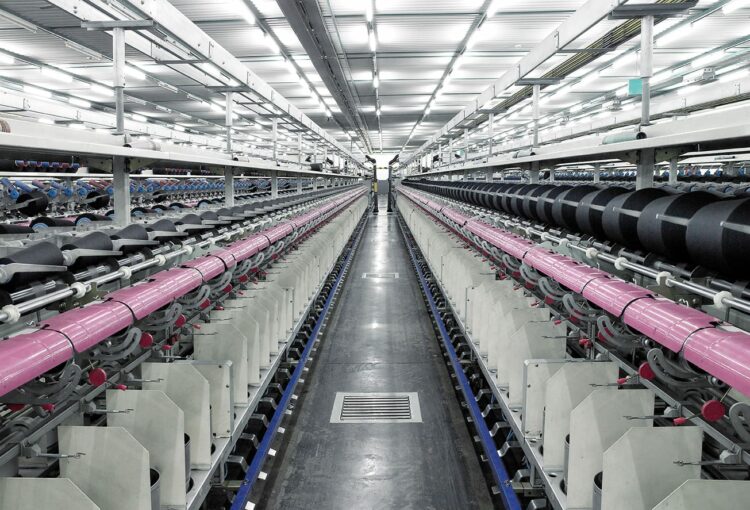In response to growing demands from direct customers and consumers for more sustainable coatings, producers of resins, additives, pigments, and final paint formulations are not only looking to develop greener products, they are also focused on the design of greener manufacturing processes. In addition to benefiting the environment, the implementation of greener processes often leads to increased efficiency, lower costs, and value creation. From installing newer boiler systems to developing gas-phase reactions to consuming unwanted byproducts, these companies are reducing their environmental footprints and at the same time increasing their competitiveness in the marketplace. A few examples of recent projects within the coatings industry are highlighted below.
Waste-to-energy at Evonik
In Evonik’s crosslinkers production units in Mobile, AL, the company uses waste-to-energy to decrease waste and provide heat to reduce air emissions. The unit burns nonhazardous solid waste in thermal oxidizers and to date has converted by combustion 50,904 MWH of waste to energy during the four quarters for which data is available, according to Evonik’s Environmental Manager Bill Klutz. “Using average CO2 factors for natural gas, this quantity equates to saving 183,255 GJ or 4,571,056 NM3 of gas and not emitting the equivalent of 10,130.3 tons of CO2 from fossil-fuel-based energy.” The company is now in the process of expanding its waste-to-energy technology at a new plant using a new non-hazardous solid materials (NHSM) program from the US Environmental Protection Agency.
In addition, throughout the Mobile facility, Evonik incorporates a leak detection and repair (LDAR) Enhanced Program with computer-based monitoring and the use of an infrared (IR) camera to detect leaks, including natural gas leaks, and therefore promotes energy efficiency. In 2105, the company used this IR technology to review all pumps, valves, and flange connections in the Mobile facility as a preventive measure and to provide enhanced VOC emissions monitoring for all of its business units. The IR technology was also employed after a maintenance-related shutdown of production operations as a readily available method for verifying the quality of the repair and maintenance work and that no leaks were missed after final inspection, according to Klutz.
Energy-efficiency at Clariant and Eastman
Clariant has had considerable success on the topic of energy efficiency and saves CHF 6 million each year solely due to its in-house eWatch program, which covers the entire life cycle of a plant or a production process. One example of a project in this context is increased energy efficiency in the company’s catalysis laboratory in Heufeld, Germany, where significant reductions in natural gas and electricity consumption were achieved through limited investments during 2015, according to according to Lynette Chung, Head of Corporate Sustainability Strategy & Advocacy with Clariant International Ltd. She also notes that long-term savings in steam consumption have been achieved at the company’s Gendorf location in Germany due to the installation of a new exhaust steam energy recovery system.
Eastman revamped its Worldwide Energy Management Program, which is led by a full-time Certified Energy Manager, and established an Executive Steering Team in 2010. The company has dedicated a corporate budget of more than $11 million to capital energy projects and improvements and has achieved an energy intensity reduction of 9% since 2008. “We estimate that Eastman avoided approximately $30 million in energy costs in 2015, meaning that if the energy intensity had not changed since 2008, we would have spent that much more in 2015 based on current energy prices and production,” says Cathy Combs, Director of Sustainability for the company. As a result of these and other energy management efforts, the EPA has recognized Eastman with five consecutive ENERGY STAR® Partner of the Year awards. According to Combs, Eastman is the only chemical company to be recognized more than once with this award, and is also the only chemical company to achieve Sustained Excellence, EPA’s highest ENERGY STAR honor. To receive Sustained Excellence recognition, a company must demonstrate consistent leadership and exemplary performance for at least three consecutive years. Eastman has received this honor for three consecutive years. “We are very proud of these awards, and we continue to build on the progress we’ve made as we work to meet our goals,” Combs states.
New chlorine production technology at Covestro
Chlorine, produced from readily available rock salt, is essential to making polyurethane and polycarbonate intermediates. The process of extracting chlorine from salt by traditional means uses a great deal of electricity. Covestro saw this issue as an opportunity to develop more efficient technology, and the result was oxygen-depolarized cathode (ODC) technology, which uses up to 30% less electricity than traditional membrane processes. In ODC technology, the hydrogen-generating electrode typically used in the membrane process is replaced by an oxygen-depolarized cathode. Supplying the cathode—the negative pole—with oxygen suppresses the formation of hydrogen. As a result, only chlorine and caustic soda are produced, and a voltage savings of one-third the normal requirement is achieved, according to Rebecca Lucore, Head of Sustainability in North and South America for Covestro LLC.
Notably, the reduced electricity usage enabled by the technology results in up to 30% lower CO2 emissions. Covestro’s Krefeld-Uerdingen (Germany) plant has been successfully operating with this technology since 2011. “The OTC process has also been commercially available worldwide since 2013, which is a great example of our focus on scalability,” Lucore comments. She adds that estimates indicate that Germany’s total electricity consumption could be reduced by 1% if all of the country’s chlorine producers utilized the OTC process. “To put it into perspective, that equates to a savings approximately equal to the amount of electricity consumed annually by the large city of Cologne, Germany,” she concludes.
See the article on “Sustainable Manufacturing,” in the June issue of CoatingsTech for more examples.
